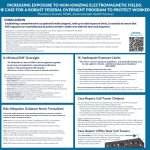
If we are to have any chance of addressing the global plastics crisis, Polyvinyl Chloride plastic (PVC) also known as vinyl, has got to go.
It cannot be produced sustainably or equitably. It cannot be “optimized.” It cannot be recycled. It will never find a place in a circular economy, and it makes it harder to achieve circularity with other materials, including other plastics.
There are three reasons for this: technical, economic, and behavioral. The inherent qualities of PVC and its cousin, CPVC, make it among the most technologically challenging plastics to recycle. Like most plastics, PVC is made with fossil fuel feedstocks. Unlike other plastics, PVC/vinyl also contains substantial amounts of chlorine, upwards of 40%. This is the C in PVC, and this chlorine content adds an additional layer of negative impacts to the earth and its people, social inequity, and an impediment to recycling that cannot be overcome. Recyclers consider it a contaminant to other plastic feedstock streams. It mucks up the machines and the already perilous economics of plastics recycling.
There is an emerging global consensus on this point, albeit euphemistically stated. The Ellen MacArthur New Plastics Economy Project consists of representatives from the world’s largest plastic makers and users, along with governments, academics, and NGOs. In 2017 it reached the conclusion that PVC was an “uncommon” plastic that was unlikely to be recycled and should be avoided in favor of other more recyclable packaging materials. “Uncommon” in the diplomatic parlance of international multistakeholder initiatives means unrecyclable. The project also took note of the many toxic emissions associated with PVC production.
That’s not surprising since after 30 years of hollow promises and pilot projects doomed to fail, virtually no post-consumer PVC is recycled. Conversely, leading brands with forward-looking materials policies such such as Nike, Apple, and Google have prioritized PVC phase outs.
But in the building industry, PVC rages on. Virgin vinyl LVT flooring is the fastest growing product in the flooring sector. So much so that in 2017 sustainability leader Interface introduced a new product line of virgin vinyl LVT, despite forecasting just one year before that by 2020 the company would “source 95 percent of its materials from recycled or biobased resources.”
The current flooring market demands the impossible – aesthetic qualities and durability at a price unmatchable by non-vinyl floor coverings. A price that is unmatchable because at every stage of vinyl production, the societal costs of its poisonous environmental health consequences are externalized, subsidized, paid for by the people who live in communities that have become virtual poster children for environmental injustice and oppression. Places like Mossville, LA; Freeport, TX; and the Xinjiang Province in China, home to the oppressed Uighur population. As we detail in our exhaustive Chlorine and Building Materials report, the unique chlorine component of PVC plastic contributes to a range of toxic pollution problems starting with the fact that chlorine production relies upon either mercury-, asbestos-, or PFAS-based processes. This is in addition to the onerous environmental health burdens of petrochemical processing that burden all plastics.
Environmental injustice
It is true that all plastics contribute to environmental injustices. Virtually all plastics are made from fossil fuel feedstocks, and all plastics share abysmally low recovery and cycling rates. Still, independent experts agree that some plastics are worse than others, and PVC is among the worst.7 Additionally, most uses of PVC have readily available alternatives or solutions that are within reach. Certainly there are non-PVC alternatives for flooring. What can’t be beat is the cost – that is, the low purchase price at the point of sale, subsidized by the sacrifices we ignore in the communities where the plastics are manufactured and the waste is dealt with. And BIPOC communities bear the disproportionate burden of it all. Acknowledging and addressing this tradeoff is at the root of the behavioral change that stands between us and a just and healthy circular economy.
In his influential book How To Be An Antiracist, Dr. Ibram X. Kendi argues that if we recognize we live in a society with many racial inequities – and acknowledge that since no racial group is inferior or superior to another, the cause of these inequities are policies and practices – then to be anti-racist is to challenge those policies and practices where we can and create new ones that create equity and justice for all.
Imagine if as part of our commitment to equity in our sustainability efforts, we recognized, acknowledged, and did what we could to address the racial inequities associated with PVC production, and committed right now to stop using PVC unless it was absolutely essential. The plastics industry would howl and point out inconsistencies, question priorities, highlight unintended consequences. We would all feel a tinge of whataboutism – what about carbon, or this other injustice, or that shortcoming of the alternatives. But it is clear that widespread incrementalism is failing us on so many fronts, none more than the environmental injustices that are hardwired into our supply chains.
Safer building materials
In fact, there are many examples of companies and building projects that have prioritized PVC-free alternatives based upon principles of equity and justice. We need more leaders in the field to join those who are abandoning vinyl in product types that have superior options. Our CEO Gina Ciganik used a non-PVC flooring in 2015 at The Rose, her last development project prior to joining HBN.
“After learning about toxic chemical additives to PVC, its inability to be recycled, and the human health and environmental damage it imparts on fenceline communities, I was no longer willing to be a participant in that planetary damage when there are alternatives,” Gina said. “The architectural team for the project at MSR Design selected the Armstrong Striations product instead.”
First Community Housing, another affordable housing leader, has been using linoleum for many years for similar reasons. In their Leigh Avenue Apartments project. Forbo’s Marmoleum Click tiles were the flooring of choice.
Vinyl is not an essential material for any of the largest surface areas of our building projects – flooring, wall coverings, or roofing. It may often be the conventional choice in conventional buildings, but it should not be the conventional choice in buildings that promise to be green, healthy, and equitable. LVT may be the fastest growing flooring product in the world, but it is a throwback to the inequitable, unsustainable world we say is unacceptable, not the world we are trying to create.
HBN can help you start by using our Hazard Spectrums for flooring and other products. So why not start here and now, with a principled stand of refusing to profit from unjust, frequently racist, externalized costs?
Bill Walsh is the founder, and a board member, of Healthy Building Network (HBN).
His views do not necessarily represent those of Environmental Health News, The Daily Climate, or publisher Environmental Health Sciences.




